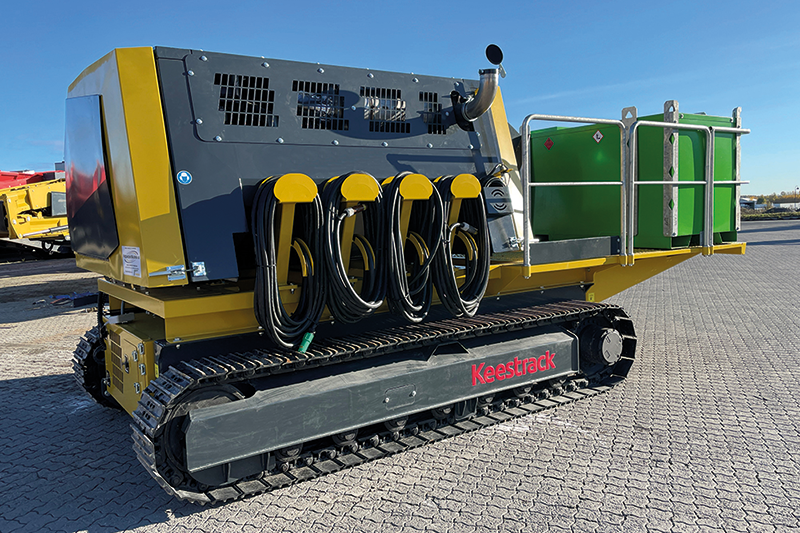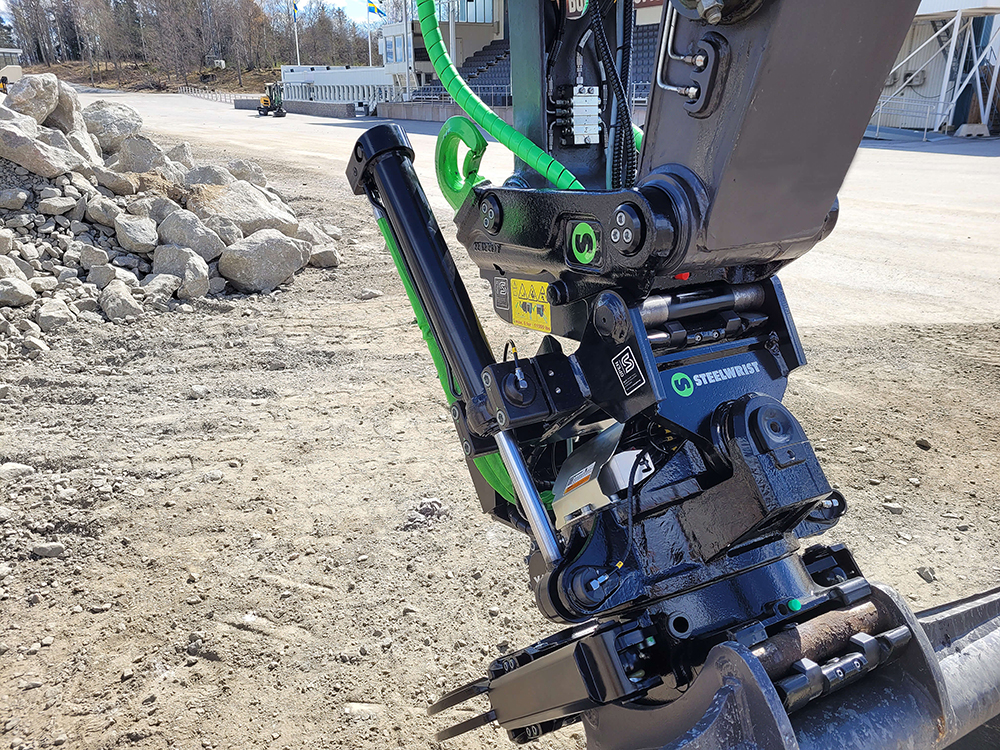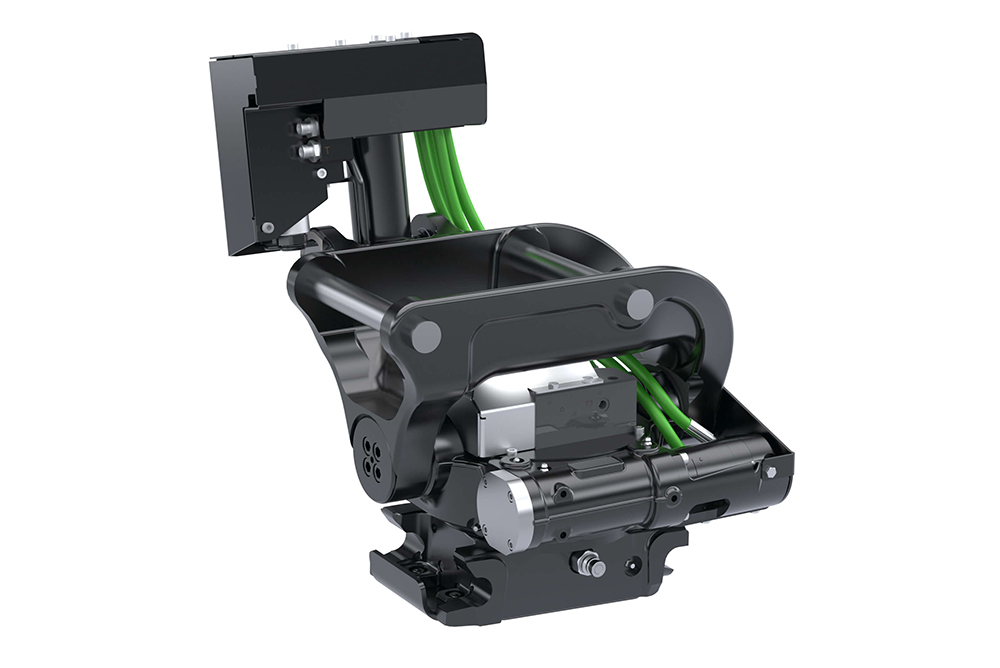Search
Hidromek’s super SUPRA series backhoe loaders
The SUPRA series engine is one of the most economical and durable in its class. The turbocharged engine maintains high torque even at low rpm. On top of this there is a six forward and three reverse fully automatic transmission. The optional torque convertor lock (lock-up) provides fuel economy which is automatically engaged in 5th and 6th gear.
The optional MSS, or Motion Stabiliser System, works as a shock absorber on the loader lift cylinders. By damping the shock that occurs when a full loader bucket is used on rough terrain, it provides a comfortable ride that is not only smooth but also fast.
The optional piston-type hydraulic pump provides load sensitive hydraulic power, as much as the operator needs with precise control independently from the amount of the load and engine rpm. It works with efficiency up to 95%.
The optional flowsharing valves provides excellent hydraulic control independently from the amount of the load and operator’s skills for various field works such as pipe lying and channel trenching. It allows simultaneous boom, arm and bucket motions even in the low rpms and provides the opportunity of working in noise restricted areas such as hospital, school and city centre.
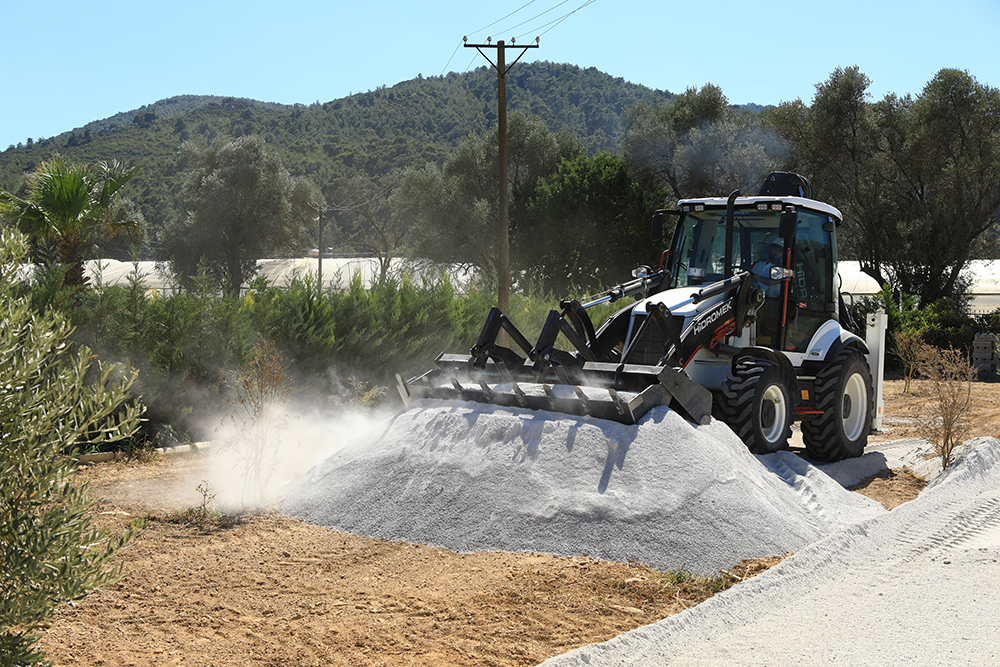
 Maintenance
Maintenance
Autonomous ADT technology available
According to Bell Equipment ADT product marketing manager, Brad Castle, “providing autonomous-ready machines will be a part of our core business in the future but in terms of sensing and guidance systems it makes sense to partner with market leaders and innovators, as we do with drivetrain, hydraulics and electronics technologies in our trucks.”
To ensure versatility, Bell provides the trucks with a standard cab with no extra hardware taking up space so that manual, remote or autonomous operation is interchangeable. “This would be useful for mining contractors, for example. Once their ADTs have finished a contract on an autonomous site, the sensory and control system could easily be removed and the truck either fitted with a new system for another site or be used in a manual operation,” Castle explained.
The company has already demonstrated its autonomous ADT system at a quarry site in Austria using one of its B45 models. “In most cases an autonomous operation will also need the end customer to set up their site to work differently; there may be special traffic control measures, berms or even different roads needed. At this point in time Bell has an autonomous ready solution available for customers that are interested in doing proof of concept work in their application,” according to Bell Equipment’s manager: Electrical and Software, Eben Lemmer.
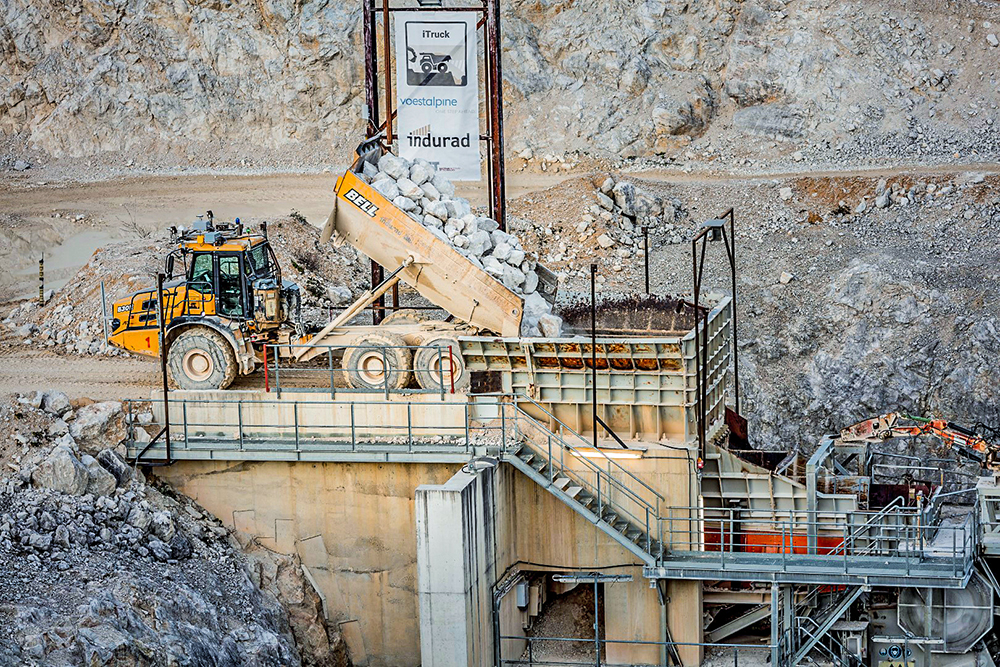
 Connected Construction
Connected Construction
Sany’s electric excavator comes to the fore
The China-based firm is also placing increased emphasis on its European operations – it more than doubled its sales on the continent to €100 million in the 2021 fiscal year compared to 2020 – and is developing adaptations to its equipment to make it more suitable for European conditions.
The SY19E, in its canopy version, is intended to meet the growing demands of cities and municipalities that are seeking to reduce pollution by opting for zero-emission equipment. Other advantages for dropping the traditional diesel engine in favour of an electric motor are lower fatigue for the operator and what the company describes as “dramatically” lower service and maintenance costs.
The electrical version of the machine also offers ease of conversion for operators, who can move from earlier versions without complications, says the company.
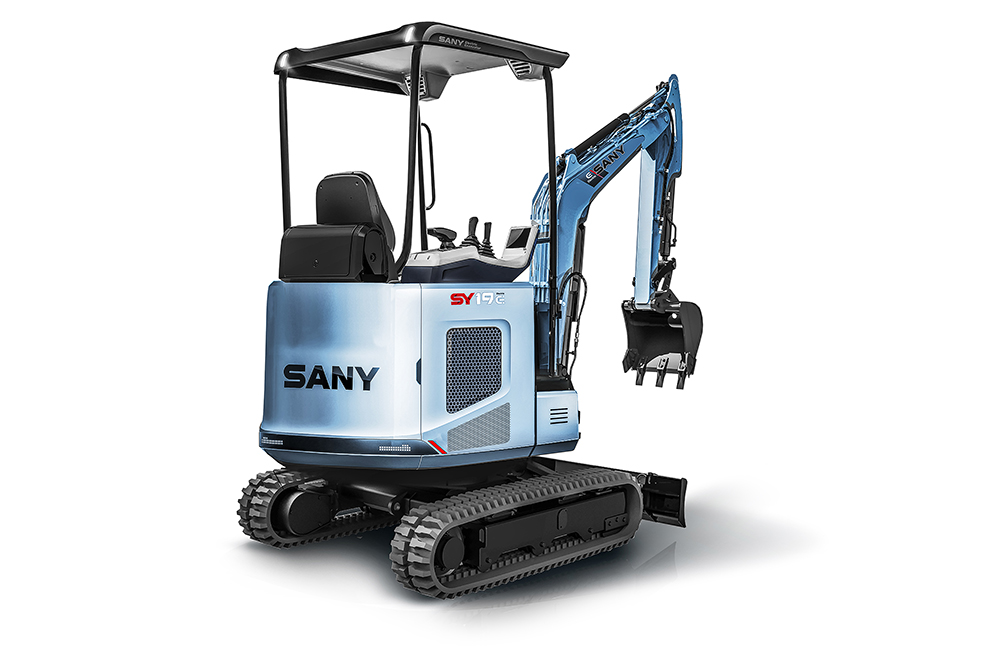
 Maintenance
Maintenance
Opening day on Monday for bauma
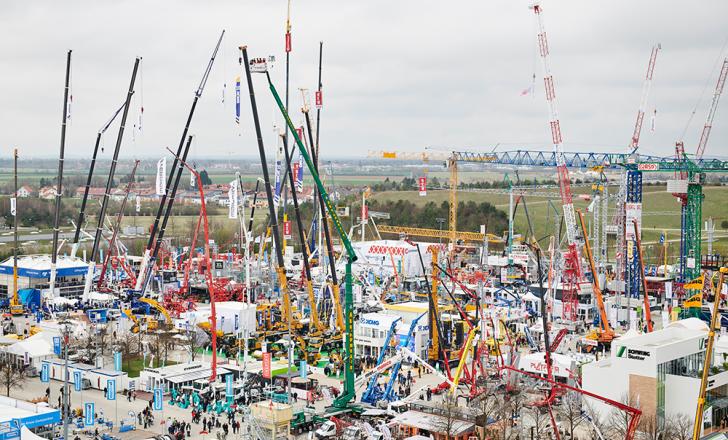
New highway bridge for the Philippines

Major Italian highway works planned

Colombian road improvement works

Lithium power for Wacker Neuson’s WL20e
But the third generation version of the WL20e now has a powerful lithium-ion rechargeable battery. Customers will be able to choose from among three battery versions in the future. There is also now a completely closed cab for operation year-round.
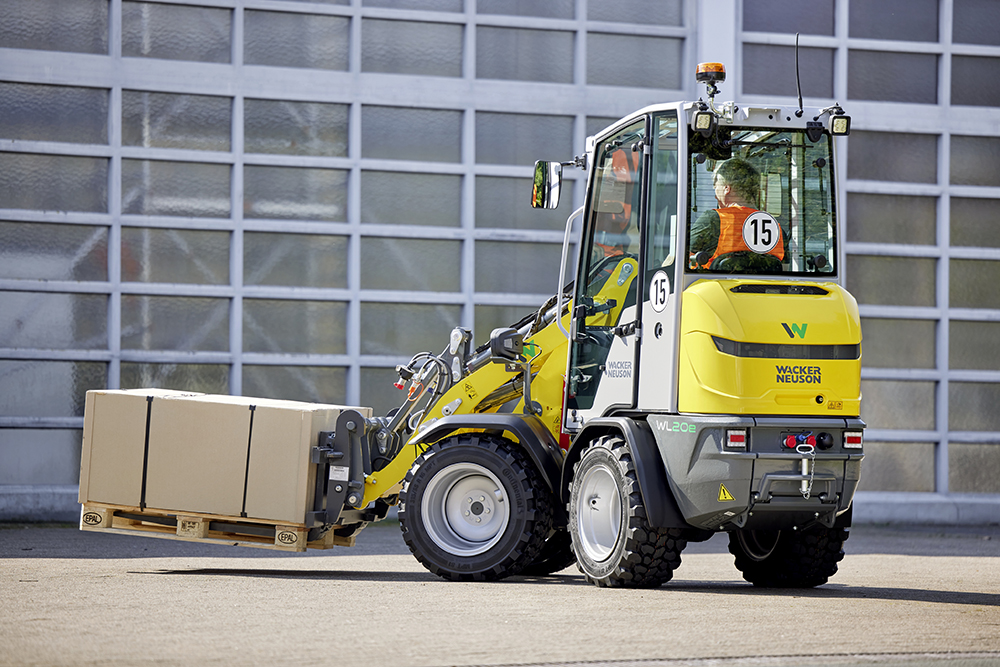
The company also says that it has developed “an absolute novelty in the world of construction equipment”, the first battery-powered, reversible vibratory plate with direct drive system in the market. The switch in the travel direction is done via the hydraulic adjustment, as in conventional models. The vibratory plate APU3050e with an operating width of 50cm and a centrifugal force of 30kN is characterised by its manageability and - thanks to the lowest design height of all reversible vibratory plates - is best for use in narrow trenches as well.
Wacker Neuson has also electrified a new product group, which supplements the portfolio meaningfully.
Kramer is also launching a new electric telehandler – more about that on the company stand.
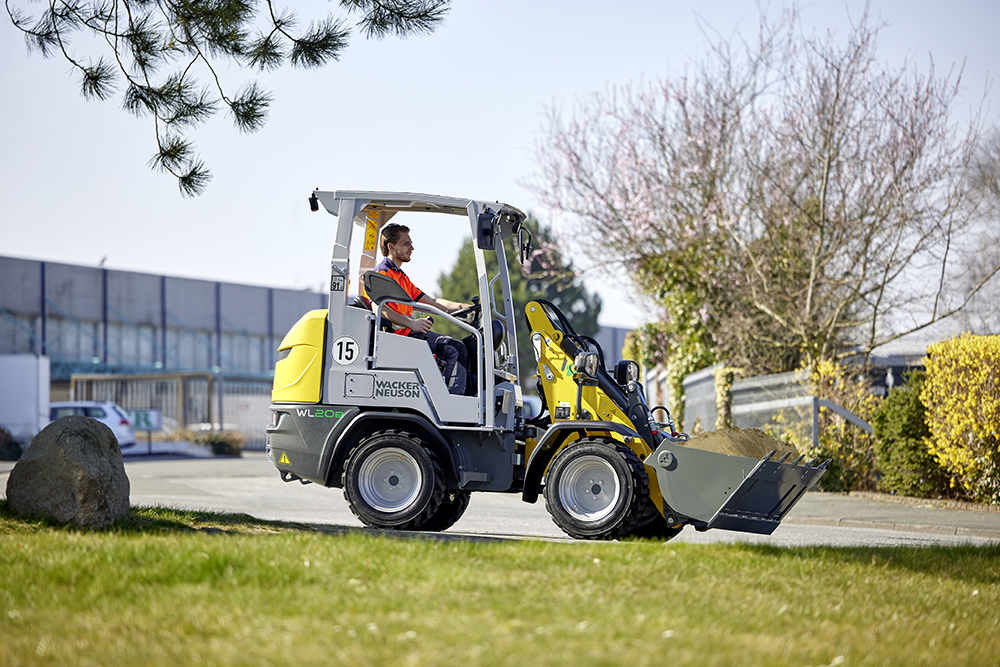
 Maintenance
Maintenance
Schwing showcases new concrete mixers
The S 56 SXF is the significantly lighter and modern replacement for the tried-and-tested S 55 SX.
The new model offers customers freedom in the choice of chassis and engine, as well as a large delivery line, small outrigger width through modern curved outriggers, no restriction in choice of pump battery and no complex conversion of the chassis.
The new model is designed to pump large volumes over a long period of time and offers high pumping capacity at low engine speed. The S 56 SXF has a reach height of 55.2 m, a delivery rate of 162 m3/h and a maximum delivery pressure of 85 bar over a five-section boom with roll-folding. The unit’s batteries guarantee an operating time of at least eight hours.
Meanwhile, the new S 51 SX sees Schwing introduce a new, large boom pump characterised by significantly reduced weight. Mounted on a 10x4 EURO 6 chassis, the unit has a typical operating weight of less than 40tonnes due to modern lightweight construction, with sufficient reserve for additional equipment and payloads.
Operation and registration of the machine are significantly simplified and fuel consumption is reduced. The combined Roll-Z-Fold boom with 235° and 230° rotation angles in the last two mast elements offers maximum mobility for construction sites.
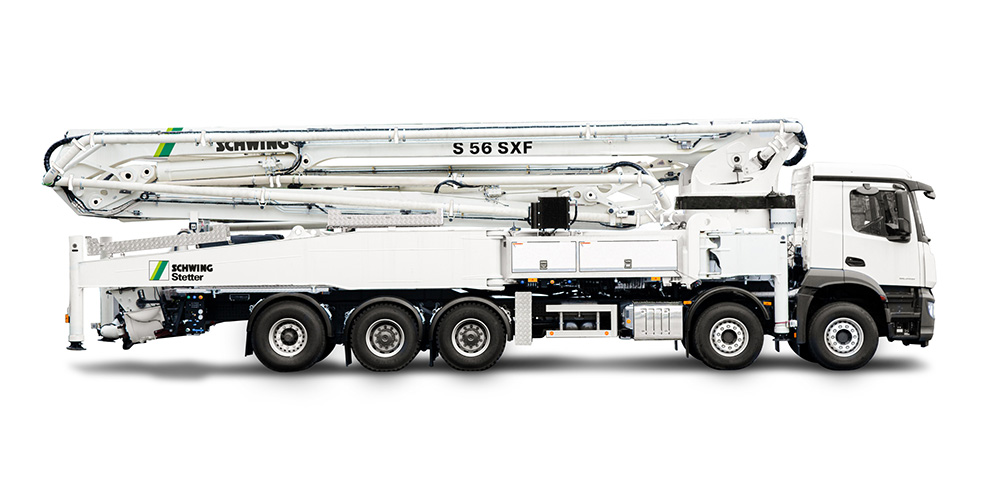
 Road Structures
Road Structures
New high performance mid-size loaders from Liebherr
The loaders have optimised Z-bar linkages for high loading performance, allowing a 20% increase in breakout over earlier generation machines from the firm in these respective size classes. The 13.2tonne L526 is powered by a 116kW diesel while the 14.5tonne L53 is powered by a 129kW diesel and the L546 has an 138kW diesel and weighs in at 15.4tonnes.
Lod capacities are said to be high for machines of these weights, while the hydrostatic transmissions are said to be efficient and responsive.
An important new feature for these model is the active person recognition system. This is able to detect the presence of a person in close proximity to the machine and will apply the brakes automatically if the driver is distracted and fails to see the person in the danger area. The machines can also be fitted with the upgraded Skyview camera system.
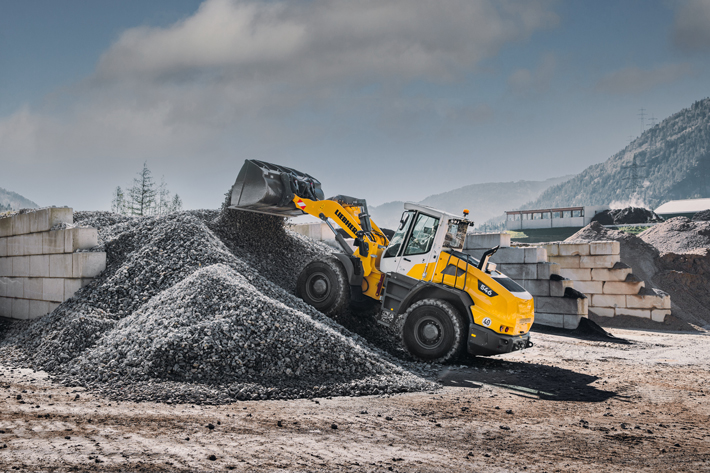
 Earthmoving & soil compaction
Earthmoving & soil compaction
Manitou goes electric with the MRT 2260e
The 3-in-1 machine is a telescopic handler, winch and aerial work platform rolled into one, with a multitude of compatible attachments for versatility and performance on a construction site. A 360° rotation of the turret and its exceptional cab visibility allows the operator to perform operations more easily without having to move the machine. The pentagonal section of the boom allows for precise movement and stability of the machine with automatic leveling of the stabilisers.
The MRT 2260e is also equipped with smart features for optimum handling and safety.
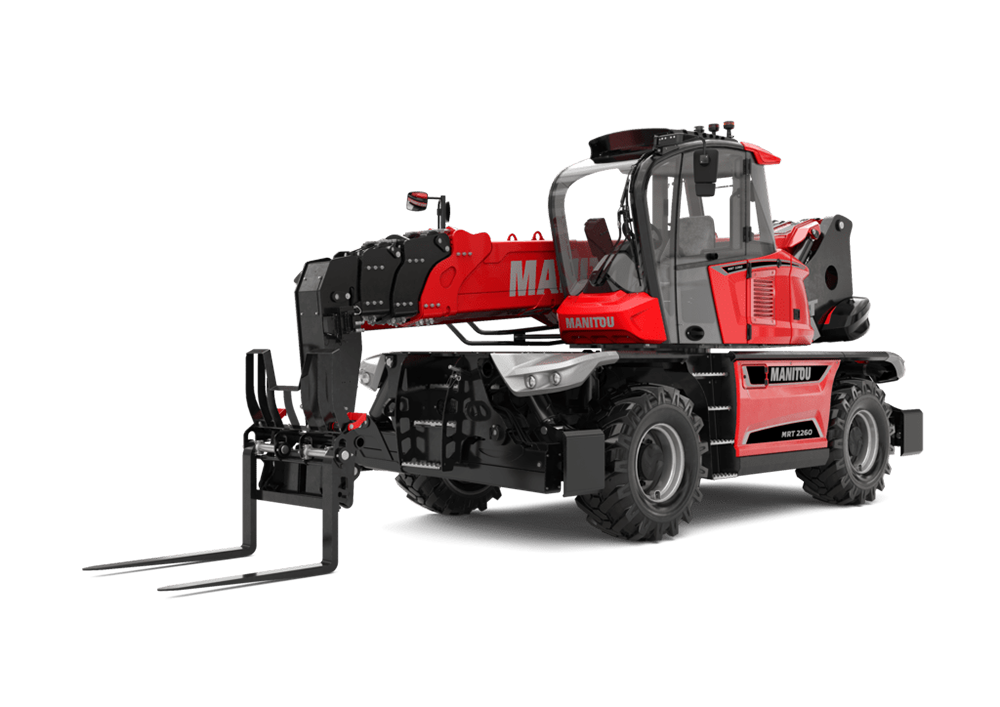
 Maintenance
Maintenance
Quickly hitched with Kramer’s Smart Attach
The well-known Kramer quick-change plate has been part of the standard equipment of wheel loaders since 1963 and even today is still an superbly effective system. The proven mounting continues to form the basis for the further development to the now fully hydraulic quick hitch system Smart Attach.
The dimensions of both quick-hitch systems are identical, so that existing attachments can continue to be used. Increased safety for the driver, no leakage of oil and, above all, time savings when changing attachments are just some of the advantages that the system offers users.
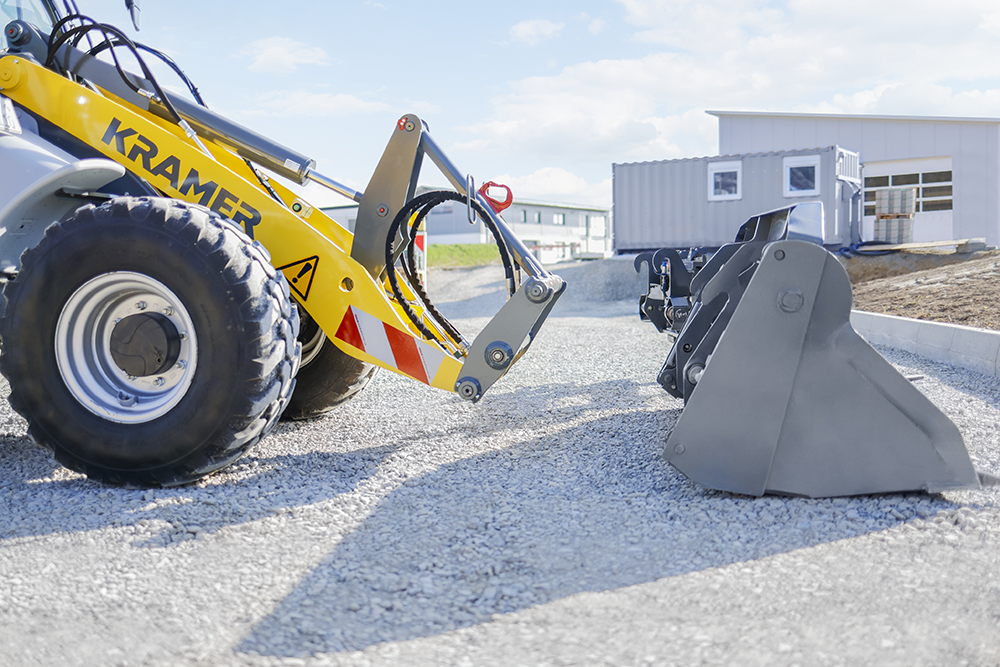

New Peruvian road tunnel link

BC ramps up Highway 1, Trans-Canada, repairs
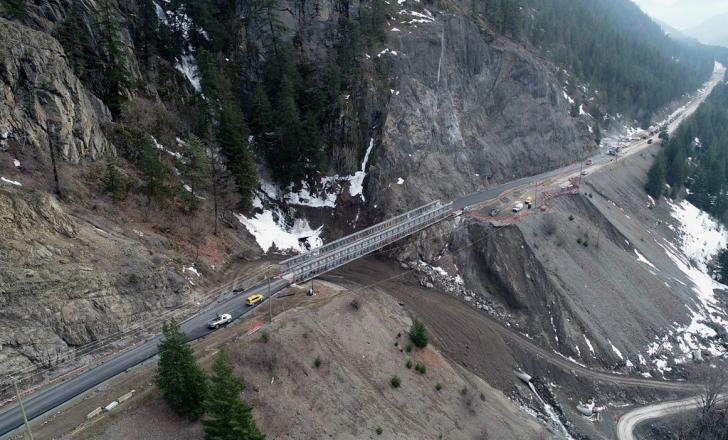
engcon launches third-generation tiltrotators
The German company’s new tiltrotator system is taking progressive steps towards sustainability, applying smart technology to reduce energy consumption and is adapted to be ready for the electrification of excavators.
“Normally in an excavator, all systems start up, with high demand for energy,” said engcon Germany country manager, Alexander Stenmans. “This [third generation] is optimised to bring the energy where it’s needed.”
The second half of 2022 sees engcon begin production of the new tiltrotator. Its technology is based on a newly developed type of valve, in combination with smart software that works with the excavator’s load-sensing hydraulic system.
This optimises both the tiltrotator’s functions and the excavator’s movements, which the company says leads to smoother digging with higher precision. The excavator’s wear, and need for maintenance, simultaneously decreases, says engcon.
With an app, the 3G tiltrotator system also enables a higher degree of individual customisation in, for example, connected remote diagnostics and mobile support.
For compatibility with modern excavator systems, engcon also builds in a newly developed tilt and rotation sensor as standard in its third-generation product.
Initial 3G excavator models are the EC319 (14-19tonnes) and EC314 (9-14tonnes). The model programme will then be steadily expanded.
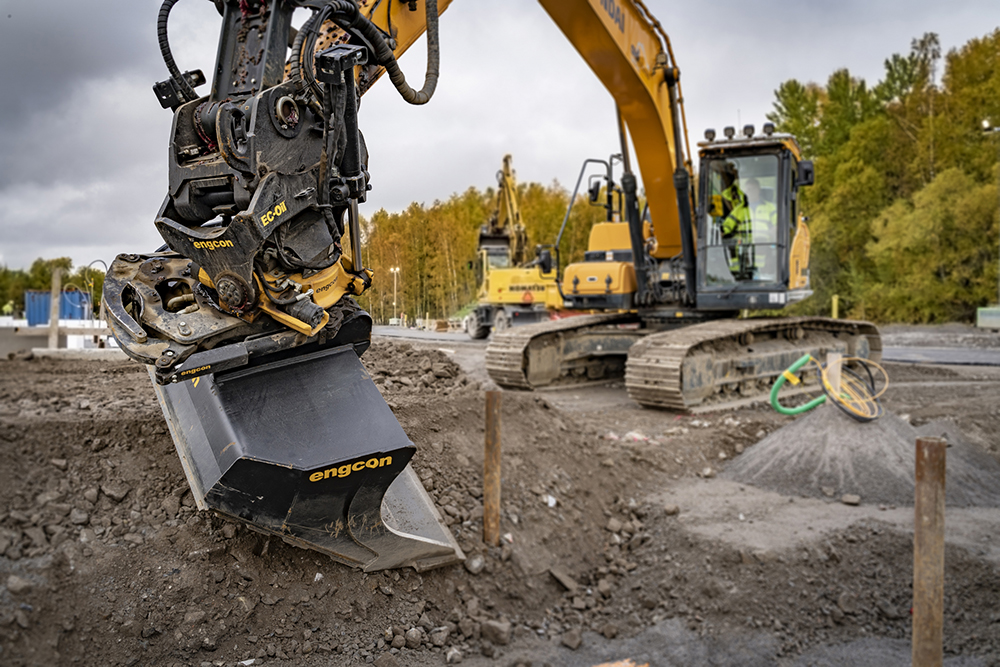
 Maintenance
Maintenance
Paschal weighs in with its NeoR lightweight
The NeoR locking screw DW12.5x160 ensures a secure and fast connection. Due to the reinforced, 15mm thick plywood, the multi-purpose panels have a fresh concrete pressure absorption of 60kN/m².
The panels are available in dimensions of 60cm x 90cm and 60cm x 150cm and offer maximum variability in manufacturing concrete columns. Square and rectangular column cross-sections with an adjustment range from 20-50cm and 5cm gradation can be formed with four multi-purpose panels at a time.
In addition to its use as column form panels, the NeoR multi-purpose panel can also be used for the end stop or as frontal end formwork by mounting the multi-purpose panel to the adjacent NeoR formwork panels using locking screws. The hole grid in the multi-purpose panel uses 5 cm intervals, so that wall thicknesses can be set with the same spacing of 10-40 cm. In addition, implementation with the standard wall thickness of 24cm is also possible.
The inside corner post and compensation panels are used together with the multi-purpose panel to form right angles. The multi-purpose panel is connected directly to the compensation panel via the integrated hole profiles by means of locking screws. In this way, wall thicknesses of 5-35cm in 5cm modular formwork and wall thicknesses of 24cm can be easily implemented in the system.
Worker safety at work is ensured by the Grip tread, which can be used as a working platform for the column form in combination with the Grip attachment. For this purpose, the accessories have been expanded to include the NeoR Multi ladder attachment for aligning the ladder and the Grip attachment.
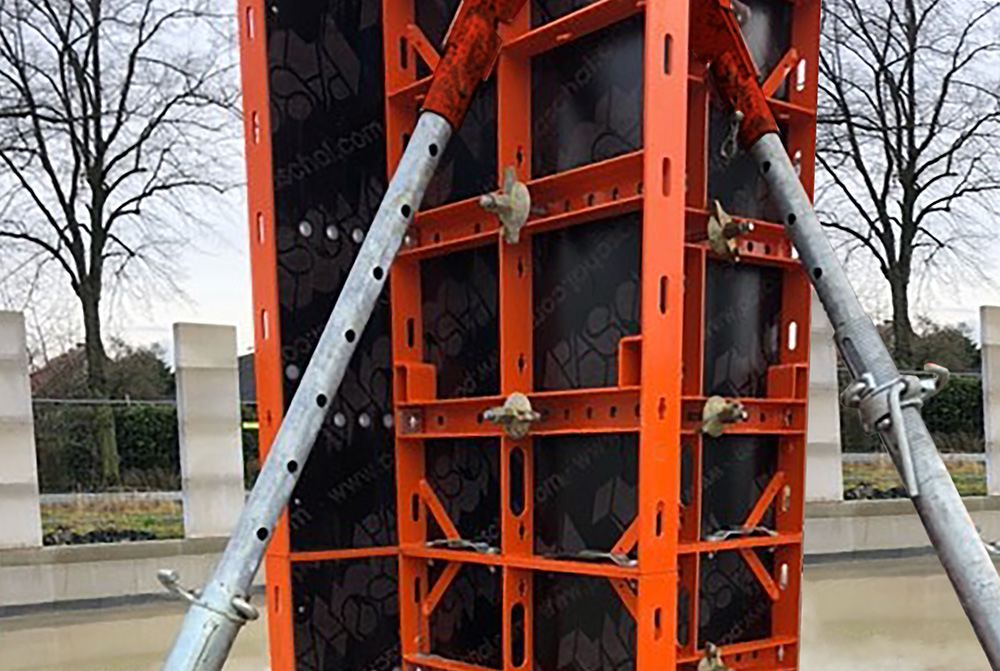
 Road Structures
Road Structures
